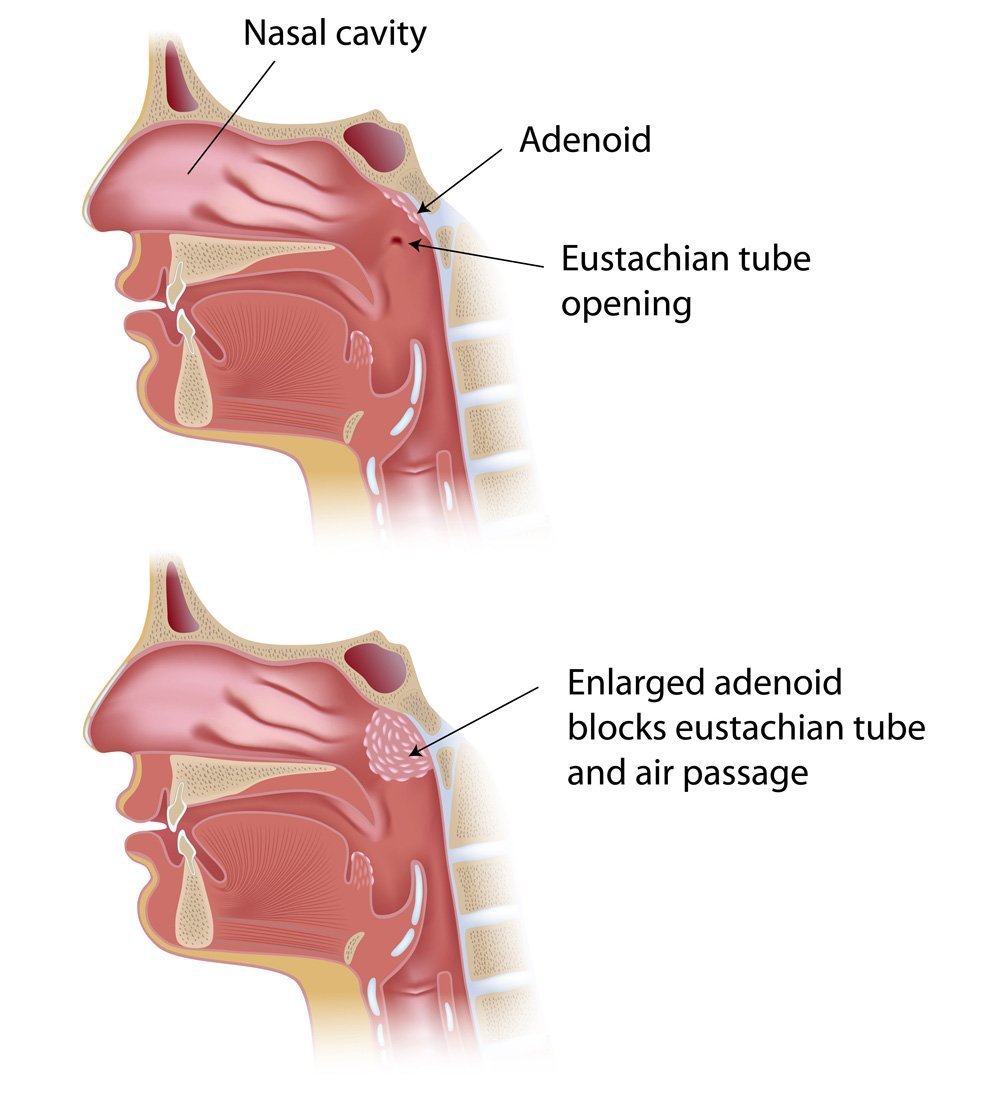
Adenoid Hypertrophy in Children: Understanding the Impact on Sleep and Health
What are Adenoids?
Adenoids are similar to lymph nodes found in the other part of the body. Adenoids are located at the back of the throat high up and cannot be seen through the nose or the mouth. They play a vital role in a child’s immune system by trapping harmful bacteria and viruses. Normally the adenoids are small in size but sometimes they can be enlarged leading to a condition known as adenoid hypertrophy.
Symptoms of Adenoid Hypertrophy
Children with enlarged adenoids may experience:
- Nasal congestion : Persistent blocked nose
- Mouth breathing: Difficulty breathing through the nose.
- Adenoid Facies : persistent mouth breathing leads to changes in the facial appearance. Children develop a openmouthed appearance associated with a narrow nose, shortened upper lip, narrow high palate and dental crowding.
- Snoring: Frequent or loud snoring during sleep.
- Sleep apnea : Pauses in breathing during sleep, often linked to obstructive sleep apnea (OSA).
- Speech changes: A nasal tone in their voice.
- Recurring infections: Repeated sinus or ear infections.
Adenoids and Obstructive Sleep Apnea
One of the most concerning complications of adenoid hypertrophy is its connection to obstructive sleep apnea (OSA) in children. Enlarged adenoids remains the most common cause of sleep apnea in children. Sleep apnea leads to:
- Interrupted sleep cycles with poor quality of sleep
- Daytime fatigue and irritability
- Poor concentration and academic performance
- Behavioral issues, such as hyperactivity/attention deficit
Untreated sleep apnea can also lead to long-term health problems like high blood pressure, heart issues, and delayed growth in severe cases.
Diagnosing Adenoid Hypertrophy
Adenoid hypertrophy is diagnosed through a combination of:
- Medical history: Discussing symptoms like snoring and sleep disturbances.
- Physical examination: Evaluating the nasal and throat areas.
- Imaging tests: X-rays Soft tissue Neck or endoscopy to confirm adenoid size.
- Sleep Study or Polysomnography: is required fordiagnosis of obstructive sleep apnea (OSA). The severity of obstructive sleep apnea (OSA) decides further management of the child.
Treatment Options
Treatment Options
- Nasal sprays (e.g., saline or steroid sprays).
- Managing weight in overweight children to reduce OSA severity.
Surgical Intervention:
- Adenoidectomy: Removal of enlarged adenoids, often recommended for children with severe symptoms or complications like sleep apnea.
Adenoid hypertrophy is a common condition in children but can lead to significant issues. Obstructive sleep apnea (OSA) is an important complication of Adenoid hypertrophy which is commonly under-recognized and under-diagnosed.
If your child experiences symptoms like snoring, mouth breathing, or disrupted sleep, seeking early intervention can make a significant difference in their health and quality of life.
Conclusion
Related Video
Frequently Asked Questions (FAQs)
1. Can adenoid hypertrophy resolve on its own?
Yes, adenoids often shrink as children grow older, but persistent symptoms may require medical attention.
2. How is adenoidectomy performed?
Adenoidectomy is a short surgery performed under general anesthesia, usually as a day procedure.
3. Are there non-surgical options for treating enlarged adenoids?
Yes, mild cases may be managed with medications like nasal sprays and treating underlying allergies.
4. What age group is most affected by adenoid hypertrophy?
Adenoid enlargement is most common in children aged 3 to 7 years.
5. How does sleep apnea from adenoids differ from adult sleep apnea?
In children, sleep apnea is often caused by enlarged adenoids or tonsils, while in adults, it’s more commonly due to obesity or other structural issues.



